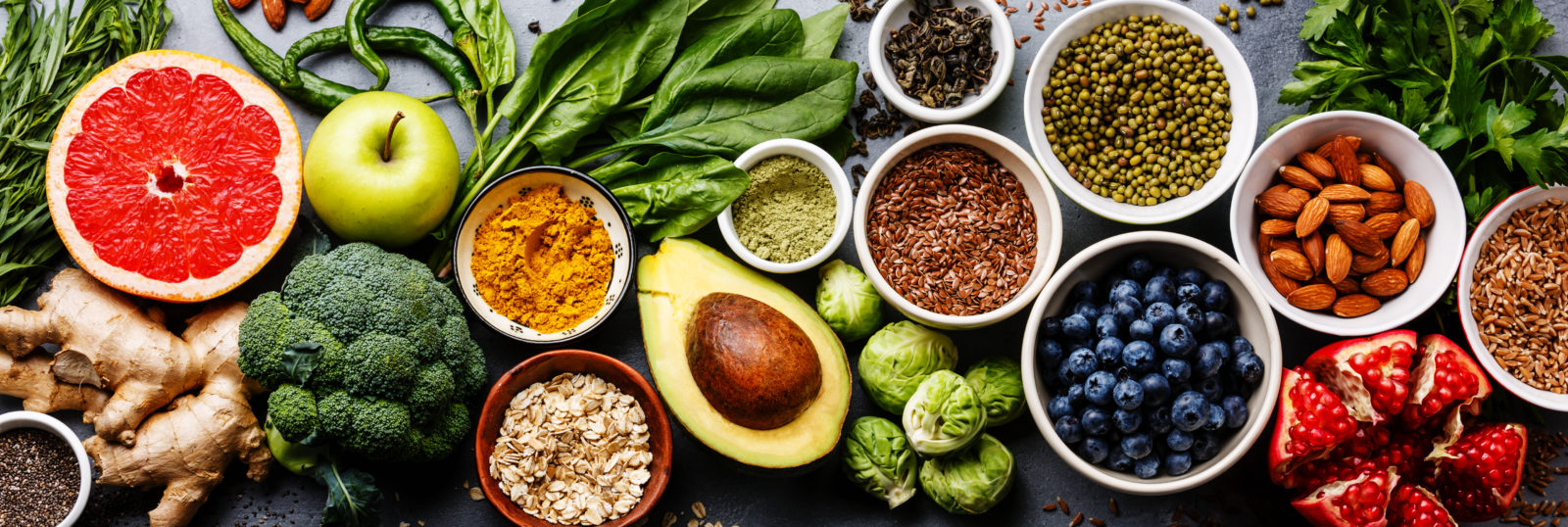In general, I’m not a fan of drinking your calories. Food keeps you fuller longer than liquids.1,2 Many fast food and restaurant smoothies are filled with sugar and devoid of nutrients.
But when they’re done right, smoothies can be a healthy, quick, portable snack or meal. They’re also a delicious way to get in your daily dose of fruits and vegetables as well as calcium, protein, and fiber, and other good-for-you nutrients, too.
So fire up that Vitamix and rinse out your reusable metal straw. Here is our five-step checklist to making scrumptious, satiating—and healthful—smoothies at home.
The Smoothie Staple
Fruit is a smoothie must. It’s the source of the smoothie’s sweetness and often its main flavor.
Bananas offer a naturally sweet and creamy texture along with potassium and fiber. Toss it in fresh or opt for frozen to double down on creaminess. (Pro tip: peel them before freezing). Using a mix of fruit—blueberries, strawberries, mango, pineapple, or cherries are great—will diversify your nutrients and add a variety of antioxidants, to boot.
A smoothie staple it may be, but too much fruit can turn a healthy smoothie into a carbohydrate overload. Aim for roughly 1 to 1.5 cups of fruit (1–2 servings), max. If you’re only using fresh fruit but long for the milkshake-y thickness of frozen, just add some ice.
Don’t forget the veggies
If you (or your kids) are one of those people who, no matter how important you know leafy greens are to a diet, do not like eating them, then smoothies are your Get-Out-of-Greens-Free card. Adding a loosely packed cup of spinach, chard, or kale will ensure that you get all the benefits of going green without the crunch.
Beyond leafies, other veggies can make your smoothie shine, too. Avocado adds a heart-healthy, creamy texture, though since it’s higher in fat and calories, use only a quarter of avocado. For a beta-carotene boost, try roasted butternut squash purée or canned pumpkin (pumpkin spice smoothie).
Bone-strong smoothie
Show your bones a little love by making your smoothie a calcium powerhouse. In addition to the calcium power of greens (see above), using just one cup of milk in your smoothie can provide 30 percent of the recommended daily intake. And don’t limit yourself to cow’s milk, either. Various calcium-fortified alternatives—soy, almond, pea, what-have-you—are just as beneficial. (Remember: the recommended dietary allowance of calcium for women 31 to 50 years of age is 1,000mg, and for women over 50, that goes up to 1200mg!)
What’s more, adding milk will boost your smoothie’s protein content, which leads us to step number four…
Protein
When your smoothie is your meal, making sure it hits all the macronutrients is key. Fruit and veggie mixes alone won’t keep your energy up until the next meal time, so be sure to incorporate a protein-rich ingredient.
Yogurt or silken tofu will turn any fruit-and-veg combo into a silky powershake (as well as reinforce that calcium consumption). Greek-style yogurt is an even heavier-hitting protein option, with a whopping 18 grams of protein in a 6 oz container! Bonus: yogurt contains good-for-your-gut probiotics.
Nuts and nut butters are also a good source of protein and healthy fat. Raw, shelled nuts could damage your blender, unless you have one of the jet-engine types, like a Vitamix. If you opt for store-bought nut butter, limit it to just one to two tablespoons for plenty of protein and flavor without too many calories.
Micronutrients
And finally, smoothies are the Pinterest-perfect way to sneak in some of those micronutrients and other “superfood” elements that aren’t as sneakable at dinnertime. Add in a tablespoon of ground flax or chia seeds for heart-healthy omega 3s (and a good dose of fiber, too). A tablespoon of exotic fruit powders—such as lucuma, camu, mulberries, or acai—will ratchet up your smoothie’s antioxidant power and fiber content, as would a dose of matcha.
Other, more pricey add-ins can also rev up your smoothie’s metabolism-burning power. Spirulina, chlorella, or other algae powders are relatively smoothie-ready, in that they come in powder form, contain sky-high levels of micronutrients (and even considerable protein), and their not-exactly-delicious taste will be drowned out by the other ingredients.
***
For more sensational smoothie ideas, check out our PB’n’J Smoothie and Blueberry Smoothie found in our Kids in the Kitchen eBook.
References:

